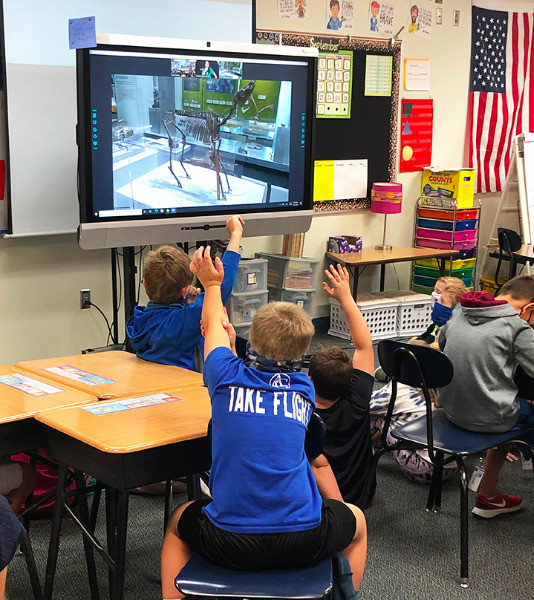3rd graders connect to Morrill Hall's "The Stories Skulls Tell" virtual field trip
Nebraska's State Museum program enhances students' science study of prehistoric skull structure
Is this a carnivore or herbivore? Look at those teeth!
That was just one of the questions that students tried to answer this past Monday, when Wahoo Elementary third graders virtually traveled back in time to evaluate animal skulls, with the help of scientists at Morrill Hall on the University of Nebraska at Lincoln campus.
Due to COVID-19 restrictions, students are not able to attend field trips in person right now, so this virtual field trip, "The Stories Skulls Tell," was the perfect solution!
Students just wrapped up a science lesson on prehistoric animals' skull structure. The scientists at Morrill Hall explained that the size and shape of the animals’ skulls, as well as their teeth, helped them decide if an animal was a plant eater or meat eater. In addition to the type of teeth, an animal’s eye position also helped scientists determine what type of animal it was.
Students compared skulls from modern animals such as the coyote, mountain lion, and squirrel. Then they traveled back into the prehistoric era where they saw fossils of a bear dog, Oreodont (small rodent) and a three-toed deer. All of these animals are extinct, and range from 17 to 23 million years old.
“My favorite part was learning about the mountain lion skull! It was interesting to learn about the different types of prehistoric animals and study their fossils, even if we didn’t get to be there in person,” commented student Ian Nelson.
Morrill Hall encourages patrons to visit in person, while wearing masks and following social distancing guidelines.



 Launch the media gallery 1 player
Launch the media gallery 1 player